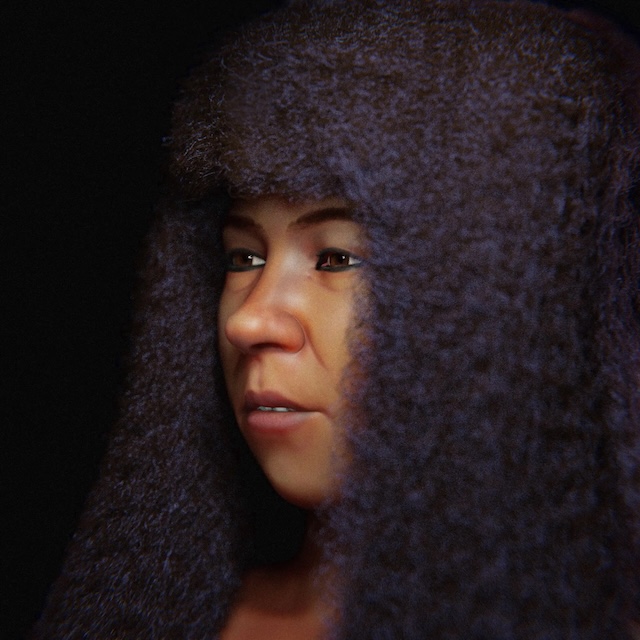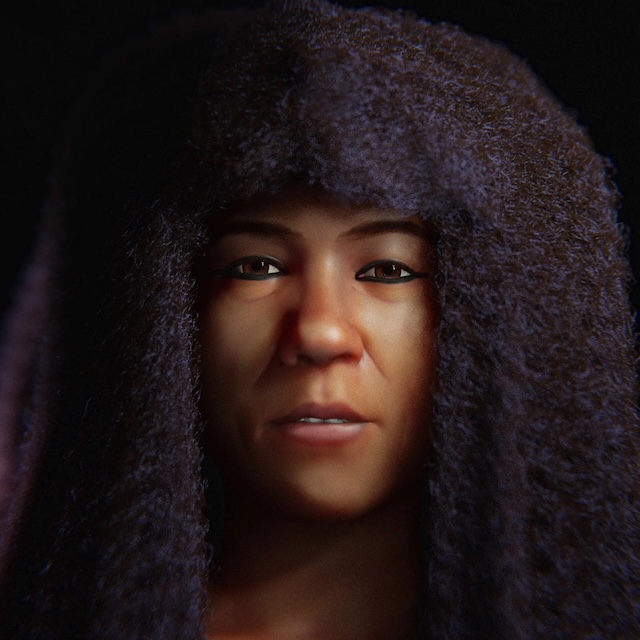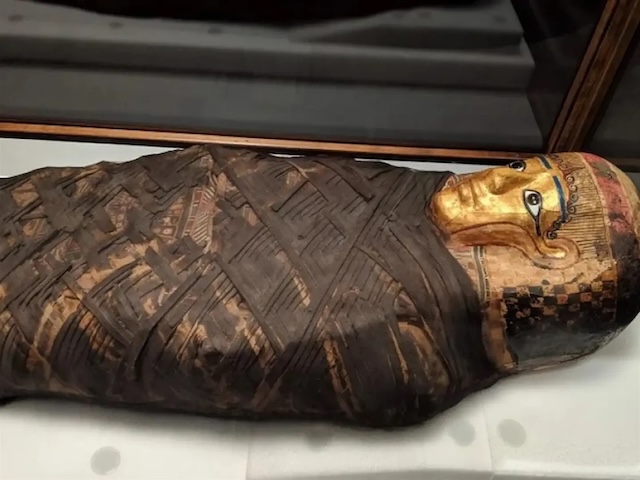In an extraordinary feat of modern science, researchers have digitally reconstructed the face of a mysterious Egyptian mummy known as the “Gilded Lady.” This captivating individual lived over 1,500 years ago, and scientists have now brought her face back to life with the help of advanced imaging techniques and forensic science.
A 1,500-Year-Old Puzzle
The Gilded Lady was a woman who lived during the Roman occupation of Egypt. She earned her title due to the golden headdress that adorned her mummy. Found remarkably well-preserved, the woman is believed to have been in her 40s at the time of her death, with tuberculosis potentially being the cause, according to scientists’ postulations. The preserved body is housed at the Field Museum in Chicago and has been the subject of fascination for researchers, who used non-invasive techniques to explore her life and death.
Digital Resurrection Through CT Scans
Thanks to cutting-edge technology, the team was able to digitally raise the dead without unwrapping the mummy’s remains. The process started in 2011 when scientists performed a CT scan of the Gilded Lady’s body, revealing detailed insights about her physical condition and the preservation methods used during her mummification. The scan allowed researchers to create a 3D map of her body and skull, which became the foundation for reconstructing her facial features.

Cicero Moraes, a Brazilian graphics designer and the study’s lead author, worked with an international team to digitally reconstruct the Gilded Lady’s face. The process began by reconstructing the skull, which was then used to design structures such as the nose, ears, and eye position. The researchers applied modern-day measurements of tissue thickness based on ultrasound data to predict her soft tissue structures with remarkable accuracy.
The Gilded Lady’s Modern Look
The resulting image showcases a youthful face with short, curly hair and a slight overbite. Remarkably, some of her hair and facial features, like lumps of resin inserted during mummification, remained intact after all these centuries. This contributed to the final digital recreation of the face, which was stunningly life-like. Moraes mentioned that the final version reminded him of his mother-in-law, showing how strikingly human and relatable the Gilded Lady appears after this scientific resurrection.
Insights Without Destruction
The project is groundbreaking because it highlights how non-invasive technologies such as CT scans allow archaeologists and anthropologists to uncover important details about ancient individuals without physically disturbing or damaging their remains. The team cross-referenced all the data gathered from the scans and matched the reconstructed face with known characteristics of women from Roman-occupied Egypt in their 40s. They even created two versions of her face—one in color and one in grayscale—to avoid making assumptions about her skin tone.

Social Status and Burial Practices
The gilded elements of her burial suggest that the Gilded Lady was likely a middle-class individual in Roman-occupied Egypt. The methods of mummification used, along with the items she was buried with, indicate a person of some significance, though not necessarily royalty. However, the team has yet to determine her name or exact identity.
According to Michael Habicht of Flinders University in Australia, who co-authored the study, the case illustrates the level of care taken in her burial and preservation. Though she remains anonymous, the Gilded Lady’s face now stands as a testament to the power of modern science to connect us with the past in ways previously unimaginable.
The Future of Digital Archaeology
The Gilded Lady’s case is a shining example of how scientists can employ CT scans and digital reconstructions to study ancient remains. The process is non-invasive, allowing researchers to investigate delicate mummies and artifacts without compromising their integrity. As David Hurst Thomas from the American Museum of Natural History, who was not involved in the study, points out, these techniques are repeatable and leave no damage behind, making them invaluable for preserving historical context while gaining new knowledge.
This method of research opens the door to future discoveries, allowing scientists to recreate other ancient individuals and offer insights into their lives. The Gilded Lady, once a cryptic and mysterious figure, now has a face that bridges the gap between the ancient world and our modern understanding of history.

Conclusion
Through the combination of digital technology, forensic science, and non-invasive imaging, the Gilded Lady has been brought back to life. Her reconstructed face offers a glimpse into the distant past, allowing us to connect with the humanity of a woman who lived over 1,500 years ago. The study not only celebrates the advances in archaeological technology but also the respect and care modern scientists use to preserve the dignity of ancient remains. As new technologies continue to evolve, we can look forward to more fascinating reconstructions of individuals from history, giving us a unique window into ancient lives.
